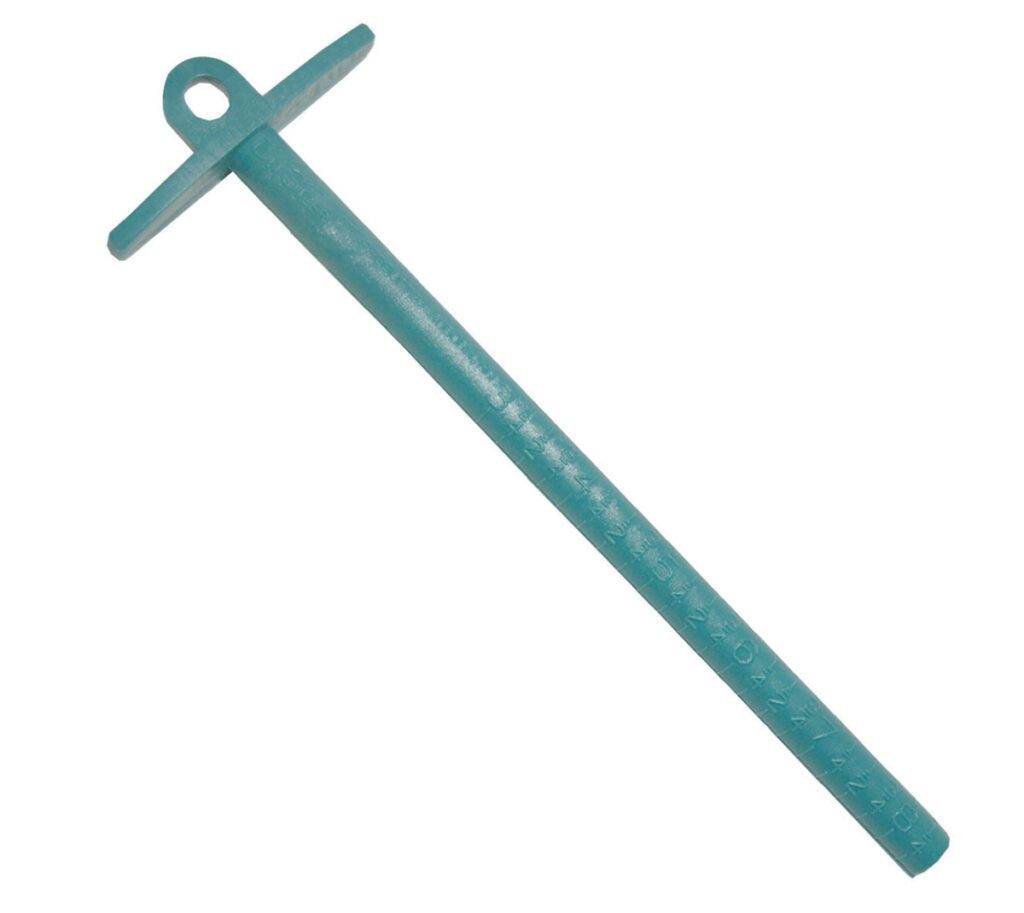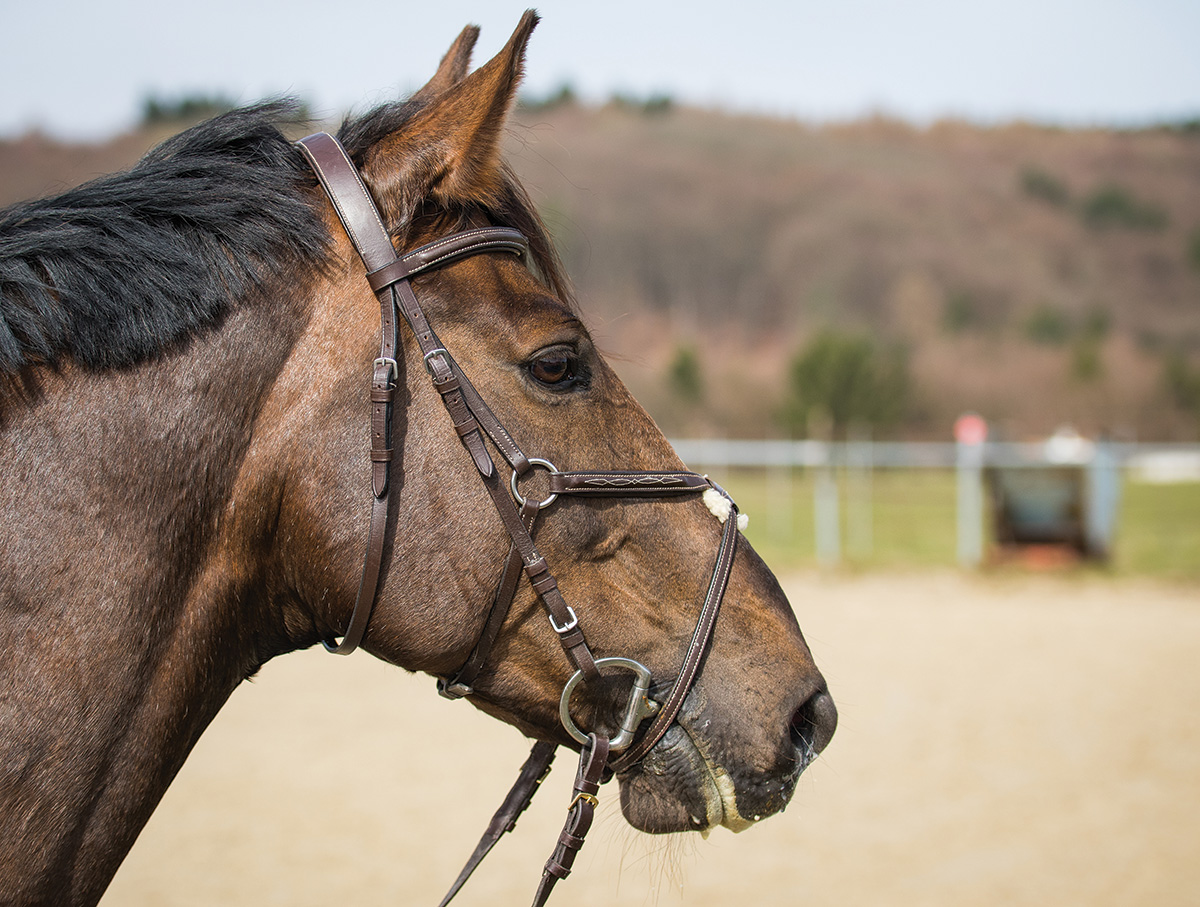
Finding a bit that gives you the ability to communicate clearly with your horse and one that he enjoys can feel a bit like finding a needle in a haystack. While nothing can take the place of trial and error, Marty Whitehouse Riney, DVM, an equine vet specializing in dentistry and a professional horse trainer based in Kentucky, offers some tips on how to narrow the search for the perfect mouthpiece.
Determining the Right Bit Fit for Your Horse
While your horse’s dental care specialist can advise on his general mouth shape, don’t dismiss what you can determine on your own.
“Pull your horse’s lips apart and see how thick his tongue is compared to others in the barn,” says Whitehouse Riney. “If your horse is reasonable, you can also see and carefully feel where the bit sits in his mouth.” This will help determine if his palate (the roof of his mouth) is low, which might indicate what type of bit is most comfortable for him.
“It’s important to realize that bit sizing and palate shape are not the be-all, end-all of bit fit,” she continues. “It’s also important to take into account how thick or thin the horse’s tongue is, which can also make a difference in bit fit.”
Whitehouse Riney says the best way to narrow down your bit search is to look at these five things: Fit, material, thickness, ring type, and joint. Once you find a mouthpiece that fits, you can then start choosing other things around it, such as cheekpiece, diameter and material.
The Right Bit Width and Fit for Your Horse
A 5.5-inch bit width is considered “standard,” but a bit sizing tool can eliminate guesswork if you don’t have bits of varying sizes at your disposal. These tools are made of hard plastic and look like a deworming tube; they’re placed in the corner of the horse’s mouth and slid through until touching the other corner. The measurement displayed corresponds to the bit size that will best fit the horse.
A bit that fits properly will allow for a finger’s width of room between the horse’s cheek and the side of the bit.

Mouthpiece Material
Another thing to remember is that each horse is an individual, just like us.
“What feels good in a horse’s mouth will vary by horse and their anatomy and head shape,” says Whitehouse Riney. How a bit feels to you, as the rider, also plays a role in finding the best bit. “How you ride a horse is different than the way I do; it varies and is based on the individuality of the horse/rider partnership,” she explains.
Texture and weight of the bit can also come into play. Some horses can be adamant about what mouthpiece materials they don’t like, raising their heads when bridled or gaping their mouth as soon as the mouthpiece hits their tongue.
There are several common mouthpiece materials available, including stainless steel, rubber, sweet iron, copper, plastic, and even leather. Trial and error can get pricey, so it’s worthwhile to see if friends or barnmates have some bits you can borrow.
◆ Stainless steel bits are the most common; these won’t rust or flake and are quite durable.
◆ Sweet iron and copper bits encourage salivation and relaxation.
◆ Rubber and plastic bits are not as durable as metal bits, but they are often preferred by horses with sensitive mouths.
◆ Leather mouthpieces are often enjoyed by horses that are highly sensitive; these bits become pliable and soft when soaked with saliva.

Thickness, Ring Diameter & Joint Type
Another measurement to consider is the thickness of the mouthpiece the horse is being asked to carry.
“Horses with petite, thin tongues may not be able to carry a bit with a traditional mouthpiece circumference,” says Whitehouse Riney.
Ring type is another source of variability.
“If you have a horse that’s hard to turn, a fixed cheekpiece, like those on an eggbutt or full cheek, can offer more stability,” she adds. “Other horses like bits that can slide a bit.”

Ring diameter in bits refers to the size of the sides of O-ring, D-ring, eggbutt and loose-ring snaffles; the rings often vary in size from 2.5 to 4 inches.
It can seem there are many as many joint options in bits as there are breeds of horse, and most horses tend to prefer a particular one. In a nutshell, a mouthpiece with more than one joint shapes around the tongue and distributes pressure over the tongue and bars. A bit that is broken in one place places more pressure on the bars, and a solid bit places pressure on the middle of the tongue.
Set Up for Success
The best way to test a bunch of bits is to try out several in one ride, says Whitehouse Riney. The easiest way to do this is to have at least two bridles in the arena with you, each with a different bit on them, and a few more bits waiting in the wings, she advises. To make things go even faster, consider putting quick-snaps on the ends of your reins.
“You won’t need an entire ride in a bit to decide if you and your horse like it,” says Whitehouse Riney. “Two to four minutes with it on and hacking around is plenty to determine if you both like it.”
Comparing bits in this way is almost like being at the optometrist, she says. You can compare each bit to the others, figuring out if it’s worse or better than the others you rode in before.
“A lot of finding what your horse prefers is listening to what he’s telling you,” Whitehouse Riney says. If you have the opportunity to go to a bitting clinic, go, she encourages it. This is often a wonderful way to try lots of bits and determine what your horse prefers, all in one afternoon.
If you show, it’s important to know the bitting rules of your discipline, Whitehouse Riney stresses. No one wants to find a bit their horse loves, only to find out it’s illegal in the show ring!
Further Reading
◆ To Bit or Not to Bit?
◆ English Bit Basics
◆ How to Choose a Western Bit
This article about finding the right bit for your horse appeared in the September 2023 issue of Horse Illustrated magazine. Click here to subscribe!





